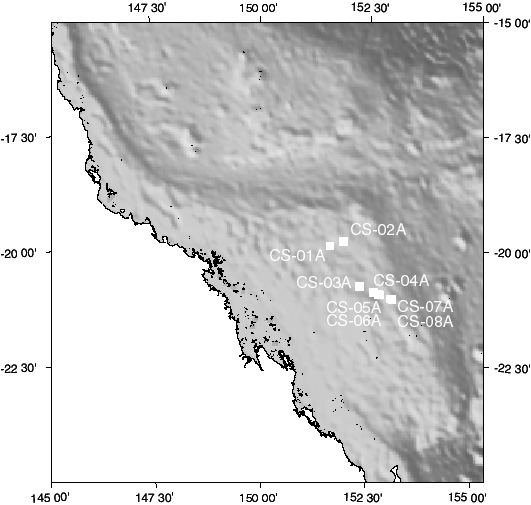
Leg 194Sea-Level Magnitudes and Variations Recorded by Continental Margin Sequences on the Marion Plateau, Northeast AustraliaCretaceous rifting in the western Coral Sea formed continental fragments that are now capped by carbonate platforms. One of these fragments, the Marion Plateau, provides ideal "dipstick" drilling targets to determine the magnitude of sea-level change and its influence on the geometry of the adjacent, mixed carbonate-siliciclastic sediment sequences. The proposed sites are essentially located along a single strike line without intervening structural elements, and subsidence rates were small during the Miocene. The stratigraphic relationship between an early to middle Miocene second-order highstand carbonate platform complex (MP2) and a late Miocene second-order lowstand platform complex (MP3) allows direct determination of the magnitude of the middle Miocene N12-N14 sea-level fall, one of the largest in Cenozoic history. The Marion Plateau also records an excellent Miocene sea-level record, which is likely to include a complete third order event stratigraphy between 30 and 4 Ma. The proposed transect includes seven primary sites to obtain complete sediment sections of the MP2 and MP3 platform phases (two sites), and proximal (two sites) and distal (three sites) slope facies to provide the stratigraphic framework. Water depths for the sites vary between 293 and 363 m, and penetrations to basement are 570 to 720 m depth. All holes will be wireline-logged. The final site locations and operational plan will be developed at the precruise meeting at ODP/TAMU (spring/summer 2000), using the latest site survey data and accurate coring and logging time estimates.
 Drilling Plan The objectives of the investigation will be accomplished by drilling 8 sites extending from shallow water across the platform edge and onto the slope. This transect will make it possible to date the shallow water carbonates by correlating them into the deeper section with planktonic microfossils using seismic data. Standard logs (gamma, density, resistivity, porosity) combined with detailed sonic and WST logs will assist in defining correlation horizons in the stratigraphic sections.
Staff Scientist: Peter Blum Operations Schedule | Back to FY 01-02 Abstracts
|